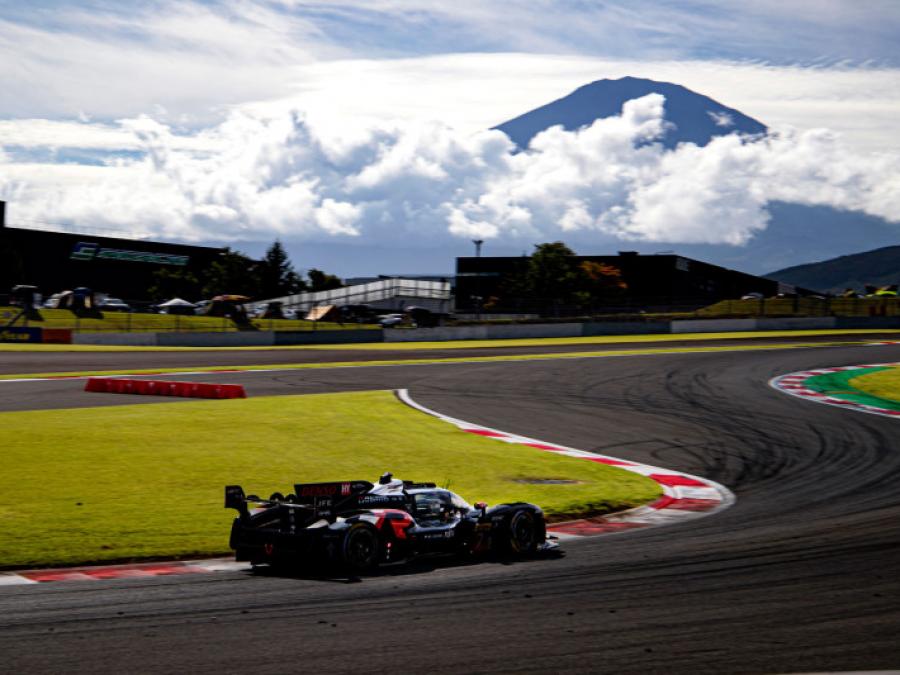
TOYOTA GAZOO Racing returns to its home circuit, Fuji Speedway, for the penultimate round of the 2025 FIA World Endurance Championship (WEC) on 28 September.
The 6 Hours of Fuji marks round seven of eight this season and offers the Japanese manufacturer the chance to secure its first podium of a challenging campaign in front of its loyal home crowd, partners, and Toyota colleagues.
Since WEC’s return to Fuji in 2012, the team has recorded nine wins and 15 podiums from 11 races, underlining its strong track record at the iconic venue. Last year, the #8 crew started from the front row and led much of the race before a late penalty denied them a podium finish.
This weekend, TOYOTA faces a highly competitive 18-car Hypercar field representing eight manufacturers. Despite a tough outing in Austin two weeks ago, the team remains determined to deliver a strong performance on home soil.
Team Line-ups
-
Car #7 (GR010 HYBRID): Mike Conway returns after injury to rejoin Kamui Kobayashi and Nyck de Vries.
-
Car #8 (GR010 HYBRID): Sébastien Buemi, Brendon Hartley and Ryo Hirakawa aim to deliver a memorable home result.
Fuji Speedway, located around 100km west of Tokyo, is deeply connected to TOYOTA GAZOO Racing. It sits near the Higashi-Fuji Technical Center, where the team’s high-performance hybrid powertrain is designed and built. Hundreds of Toyota employees are expected trackside, adding to the passionate Japanese crowd.
The 4.563km track presents unique challenges: a 1.475km straight demanding high top speed and braking stability, followed by a technical final sector requiring precision grip and traction. Preparations included simulator sessions in Cologne, Germany, ahead of on-track running beginning Friday.
-
Qualifying: Saturday, 3pm local time (8am CEST)
-
Race Start: Sunday, 11am local time (4am CEST)
Driver Quotes
-
Kobayashi (Team Principal, #7): “This is our most important race after Le Mans. We want to perform at our maximum for our Japanese fans.”
-
Conway (#7): “Missing Austin was frustrating, but I’m ready to return. Fuji is always special for us.”
-
de Vries (#7): “We want to make our home crowd proud and will give everything.”
-
Buemi (#8): “We know how to win at Fuji, but conditions can be tricky. Preparation will be key.”
-
Hartley (#8): “This race is special, not only for competition but also for the culture and fans.”
-
Hirakawa (#8): “Fuji is my home track, and we want to give fans a result to celebrate.”

In the new season, the Formula 1 race schedule will be a record-breaking one.
The record-breaking Formula 1 calendar for 2023 has been published. Traditionally, the season starts in Bahrain and ends in Abu Dhabi, and it lists 24 Grand Prix. New features include the return of racing to China (currently in provisional status) and Qatar, as well as the first race in Las Vegas. There are two built-in stages in the calendar, these are Imola-Monaco-Spain and Austin-Mexico-Sao Paulo. Azerbaijan also remained on the list, which will receive pilots in April.
Other changes in the calendar relate to the dates of the races. So, for example, the Belgian stage in Spa will be held on July 28-30, while Azerbaijan was postponed from early summer to spring. For China, certainty will appear when the situation with the coronavirus in the country becomes clearer. The stage in France was excluded altogether.
The schedule of the first five stages is as follows:
March 3-5 - Bahrain Grand Prix (Sakhir)
March 17-19 - Saudi Arabian Grand Prix (Jeddah)
March 31-April 2 - Australian Grand Prix (Albert Park, Melbourne)
April 14-16 (preliminary) - Chinese Grand Prix (Shanghai)
April 28-30 - Azerbaijan Grand Prix (Baku)
Miami (5-7 May)
Italian Imola (19-21 May)
Monaco (26-28 May)
Barcelona (2-4 June)
Canada (Montreal, 16-18 June)
Austria (30 June-July 2)
Silverstone in the UK (July 7-9)
Hungary (July 21-23)
Belgium (July 28-30).
This will be followed by a four-week break, after which Formula 1 will arrive in the
Netherlands (August 25-27)
September 1-3 - Italian Grand Prix (Monza)
September 15-17 - Singapore Grand Prix (Marina Bay)
September 22-24 - Japanese Grand Prix (Suzuka)
October 6-8 - Qatar Grand Prix (Losail)
October 20-22 US Grand Prix (Austin)
October 27-29 - Mexico City Grand Prix (Rodriguez Brothers Circuit)
November 3-5 - Sao Paulo Grand Prix (Interlagos)
November 16-18 - the Las Vegas Grand Prix
November 24-26 in Abu Dhabi ("Yas Marina", UAE).

French racer François Guissy overtakes a Ferrari F430 on a bike with three hydrogen peroxide jet engines.
The two-wheeled bike accelerated to a speed of 333 km/h in 4.8 seconds.















